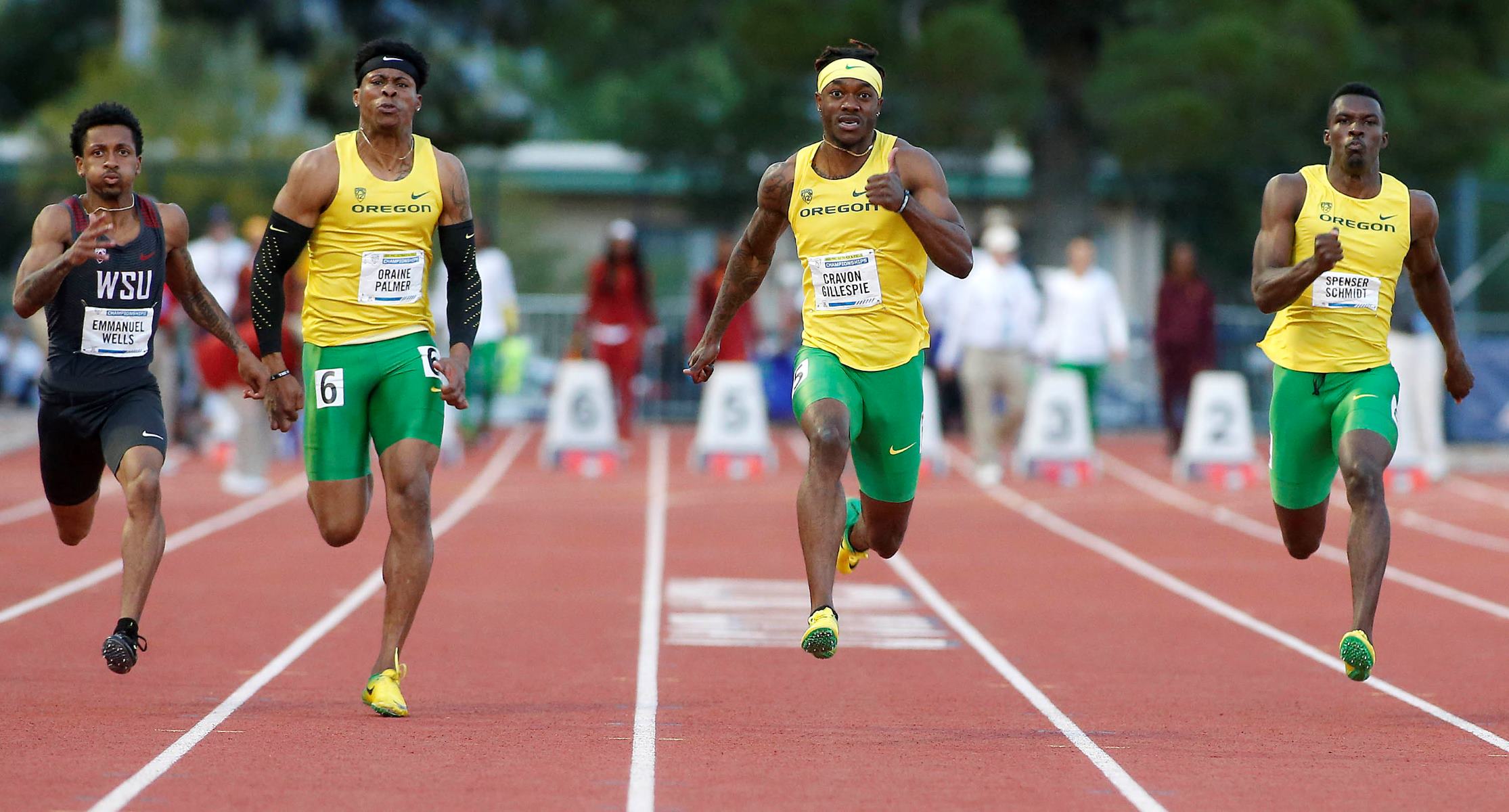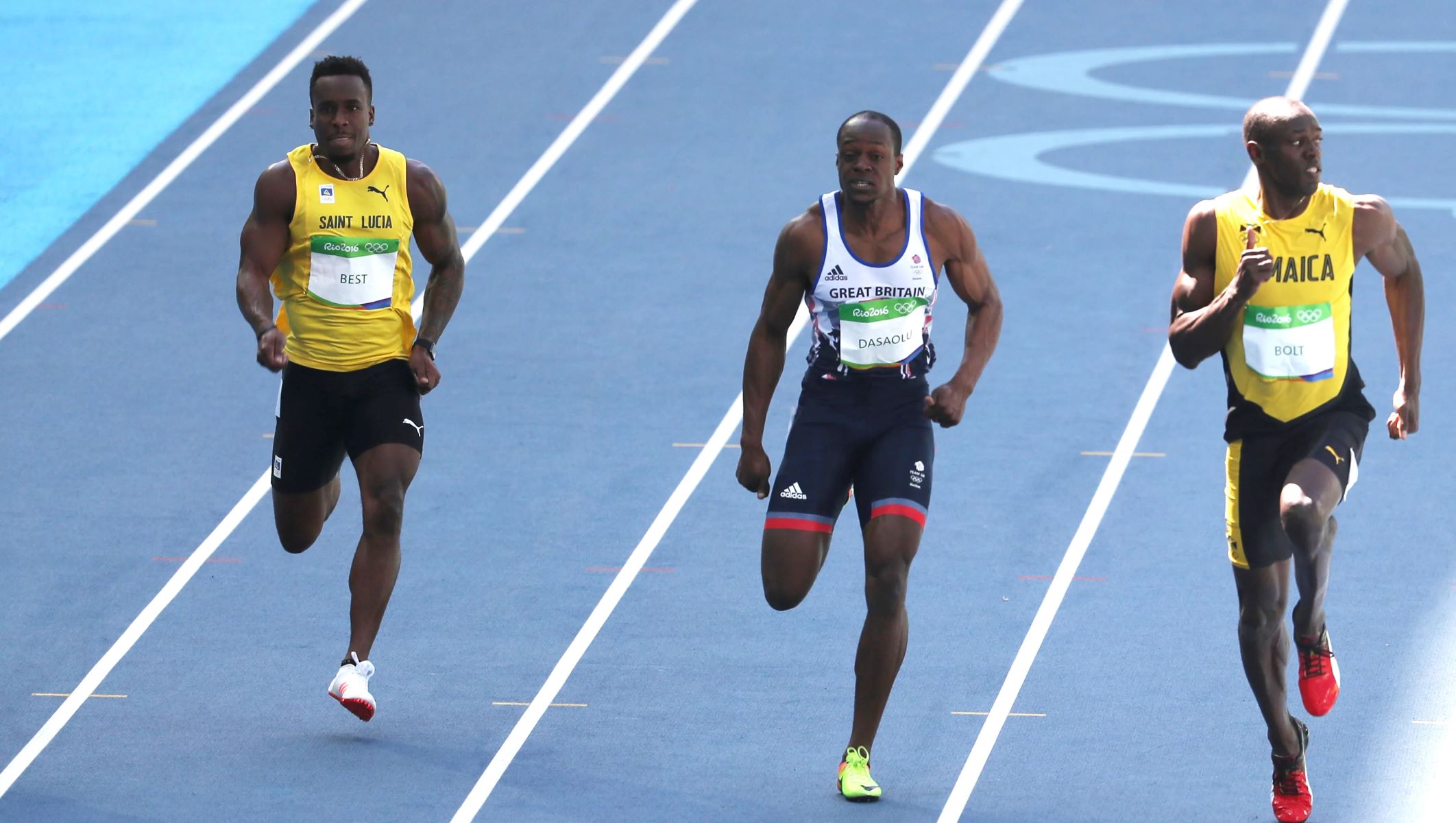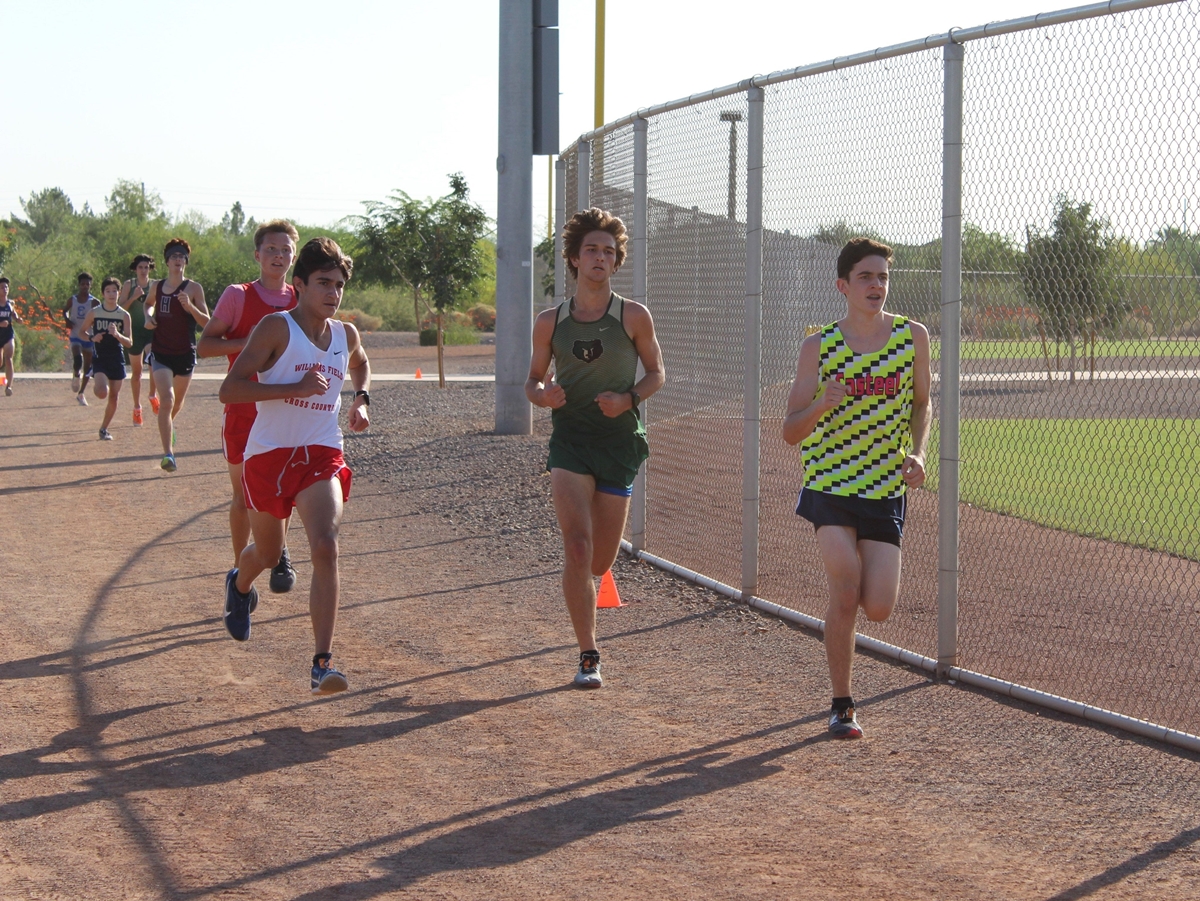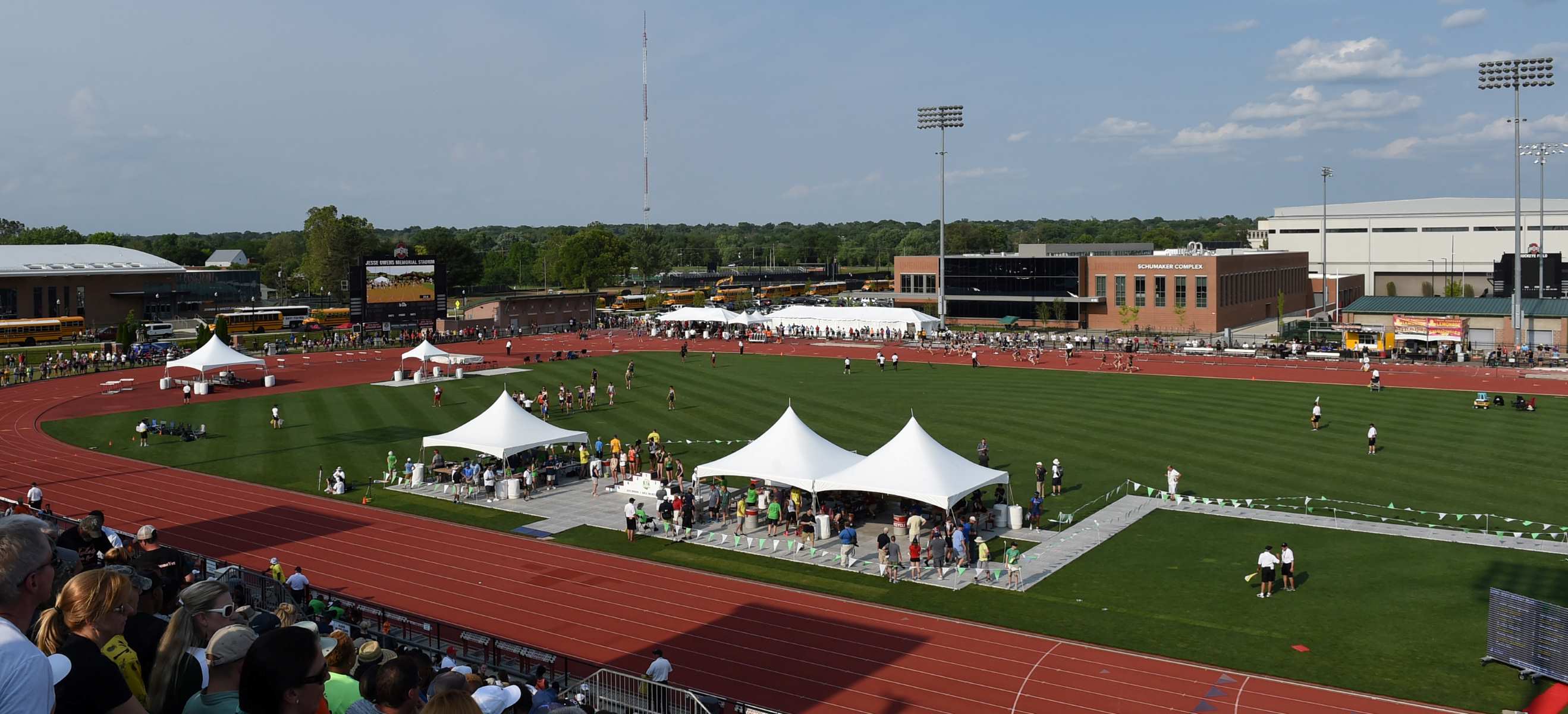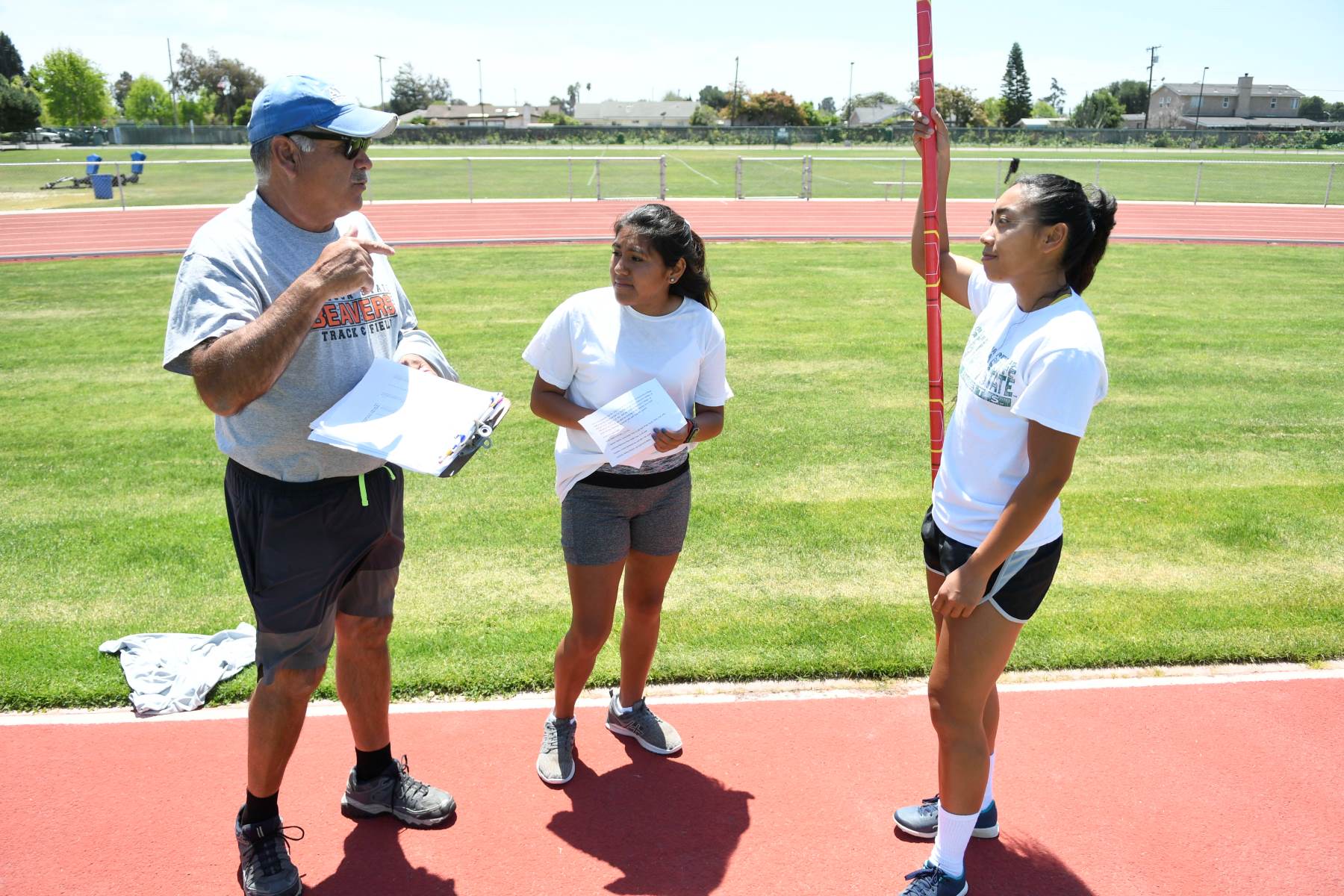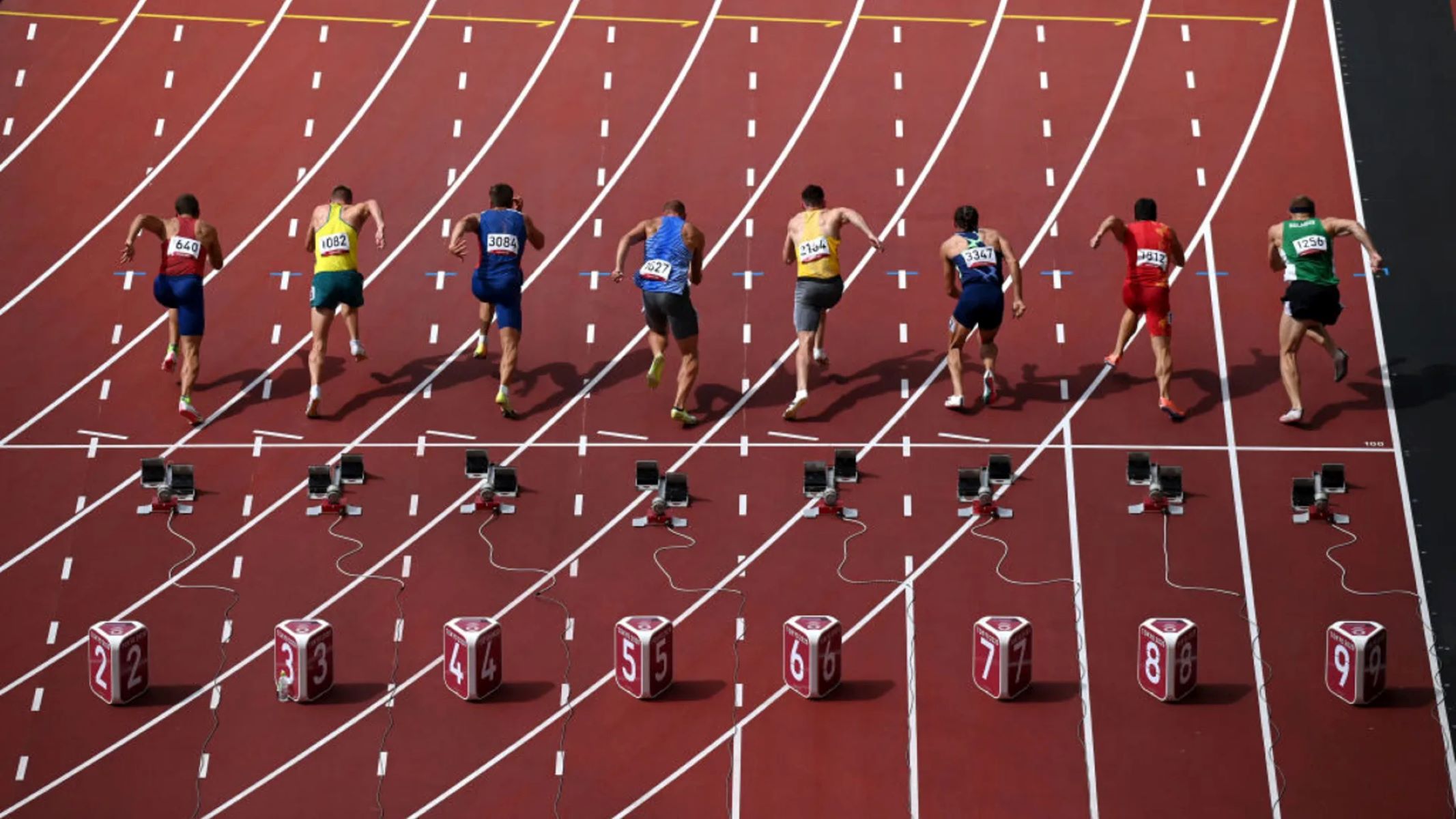Home>Misc>Featured>When Does Track And Field Start For High School
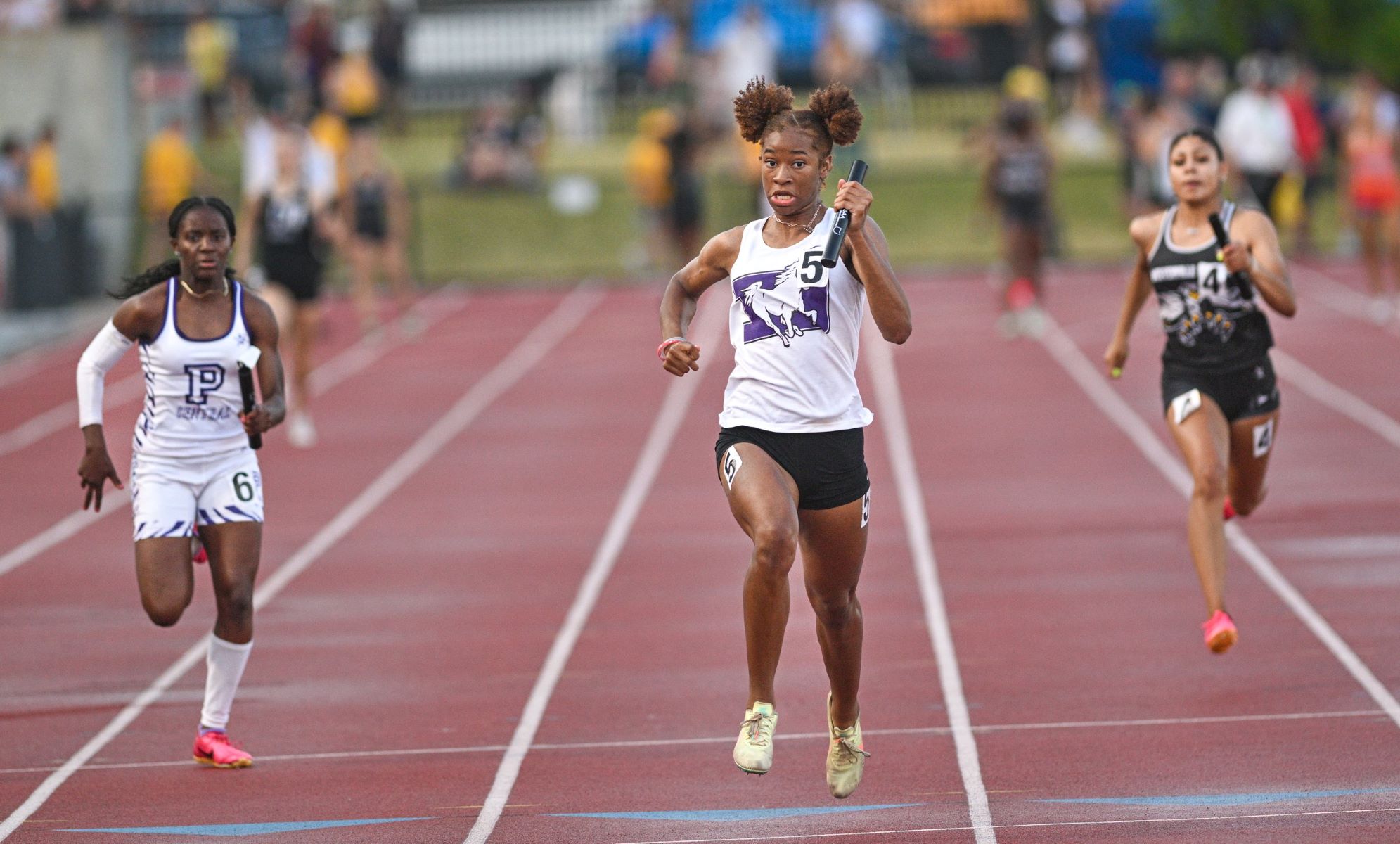

Featured
When Does Track And Field Start For High School
Modified: January 2, 2024
Find out when high school track and field season starts and get featured with our comprehensive guide. Don't miss out on the excitement and opportunities this sport offers!
Introduction
Track and field is a popular sport in high schools across the country, combining speed, endurance, strength, and technique. It offers students the opportunity to showcase their athletic abilities and compete against peers in a variety of events. Whether it’s sprinting, long jump, shot put, or pole vault, track and field allows individuals to excel in their respective disciplines.
Participating in track and field can have numerous benefits for high school students. It not only promotes physical fitness and healthy competition but also teaches valuable life skills such as discipline, perseverance, and teamwork. In addition, it provides an avenue for students to develop leadership qualities and build character, qualities that are highly valued by colleges and universities.
High school track and field programs typically start in the spring season, with athletes preparing months in advance through preseason training and conditioning. While the sport requires dedicated commitment and hard work, the rewards are well worth it. Students have the chance to represent their school, compete at various meets, and potentially qualify for district, regional, and state championships.
In this article, we will explore the importance of track and field in high schools, the eligibility requirements for participation, the preseason training process, the official start date of the track and field season, the team selection process, the regular season schedule, and the significance of track and field in college applications. So, if you’re considering joining your high school track and field team or just curious about the sport, read on to learn more about this exciting and challenging athletic endeavor.
Importance of Track and Field in High Schools
Track and field holds significant importance in high schools for several reasons. First and foremost, it promotes physical fitness and healthy lifestyles among students. Engaging in regular exercise and training is essential for overall well-being, and track and field provide an excellent opportunity to develop cardiovascular endurance, muscular strength, and agility. By participating in the sport, students can improve their physical health and cultivate habits that will benefit them well beyond their high school years.
Besides the physical aspect, track and field also helps in the personal and character development of high school students. It teaches valuable life skills such as discipline, perseverance, and goal-setting. Athletes must dedicate themselves to rigorous training schedules, balancing academics with practice, and have the determination to push through challenges. This level of commitment fosters discipline and helps students develop a strong work ethic that can be applied to various aspects of life.
Teamwork is another vital component of track and field. While each athlete competes individually in their respective events, there is a collective sense of camaraderie within the team. Athletes support and encourage each other, sparking a positive team spirit. They learn to rely on their teammates during relays and experience the satisfaction of achieving success as a group. Track and field instills values of cooperation and collaboration, which are essential skills for future endeavors in academics, careers, and personal relationships.
High school track and field programs also provide a platform for students to develop leadership qualities. Athletes often take on leadership roles, being captains or mentors to younger team members. They learn to communicate effectively, motivate their peers, and make decisions that benefit the team. These leadership experiences not only benefit the athletes during their high school years but also prepare them for future leadership roles in college and beyond.
Furthermore, track and field offers a sense of pride and school spirit. Representing their school in various meets and competitions creates a strong connection between the student-athletes and their educational institution. It fosters a sense of unity and belonging, and students feel a sense of pride in wearing their school’s colors while competing against other schools.
Overall, track and field play a vital role in high schools by promoting physical fitness, fostering personal and character development, nurturing teamwork and leadership skills, and instilling school pride. It is a sport that goes beyond mere competition, providing students with lifelong lessons and experiences that extend far beyond their high school track and field careers.
Eligibility Requirements for High School Track and Field
Participating in high school track and field requires meeting certain eligibility requirements set by each school and the state athletic association. These requirements ensure that athletes are academically eligible and meet the necessary standards to compete in interscholastic sports. Here are some common eligibility requirements for high school track and field:
- Academic Eligibility: To participate in track and field, student-athletes must maintain a minimum grade point average (GPA) and be in good academic standing. The exact GPA requirement may vary depending on the school and state athletic association guidelines.
- Physical Examination: Student-athletes are typically required to undergo a sports physical examination before participating in track and field. This ensures that they are in good health and physically capable of participating in strenuous activities.
- Age and Enrollment: Athletes must meet age requirements and be enrolled as full-time students in the high school they represent. This ensures that students are actively engaged in the academic curriculum and are not participating in track and field from other schools or programs.
- Behavioral Expectations: Student-athletes are expected to adhere to a code of conduct and exhibit good sportsmanship. Any violations of school or team rules may result in disciplinary action, including suspension or dismissal from the track and field team.
- Attendance and Academic Progress: Regular attendance in both classes and track and field practices is essential. Athletes are expected to maintain satisfactory academic progress and may be subject to academic eligibility checks to ensure they are meeting the school’s requirements.
It is important for student-athletes and their parents to familiarize themselves with the eligibility requirements specific to their school and state. They should consult with the school’s athletic department or the state athletic association to ensure they meet all the necessary criteria. Additionally, student-athletes may need to complete and submit required paperwork, such as permission forms, insurance waivers, and emergency contact information.
By upholding these eligibility requirements, high school track and field programs aim to ensure that athletes are not only excelling in their sport but also prioritizing their academic progress and overall well-being. It is crucial for student-athletes to maintain a balance between their athletic pursuits and their educational responsibilities to fully benefit from the high school track and field experience.
Preseason Training and Conditioning
Preseason training and conditioning play a vital role in preparing high school track and field athletes for the upcoming season. It is a period where athletes focus on building a solid foundation of strength, endurance, technique, and mental preparedness. Here are some key aspects of preseason training and conditioning:
Strength Training: Athletes engage in specific strength training exercises to develop the necessary muscular strength and power required for their respective events. This may include weightlifting, resistance training, and plyometric exercises tailored to improve explosive movements and overall body strength.
Endurance Training: Endurance is crucial in track and field events, especially for distance runners. Athletes engage in long-distance runs, interval training, and other aerobic exercises to build cardiovascular endurance. This helps them sustain their performance throughout races and events without getting fatigued.
Technique Work: Preseason is the ideal time for athletes to focus on refining their technique and skill in specific events. Coaches provide guidance and conduct drills to help athletes improve their form, speed, and efficiency. This includes practicing proper running mechanics, jumping techniques, throwing techniques, or hurdling skills, depending on the athletes’ events.
Mental Conditioning: Track and field require mental focus and resilience. Athletes work on mental conditioning techniques such as visualization, goal setting, and developing coping strategies for managing race-day pressure. Building mental toughness is essential for maintaining focus, overcoming challenges, and performing at their best during competitions.
Flexibility and Injury Prevention: Flexibility training is crucial in track and field to minimize the risk of injuries and enhance overall performance. Athletes engage in stretching exercises, yoga, and mobility drills to improve flexibility, joint mobility, and prevent muscle imbalances. Injury prevention strategies are also emphasized, including proper warm-up and cool-down routines and injury precautions specific to each event.
Nutrition and Hydration: Proper nutrition and hydration are essential for optimal performance and recovery. Athletes learn about the importance of consuming a well-balanced diet that provides the necessary nutrients for energy, muscle repair, and overall health. Coaches and nutritionists may provide guidance on meal planning, hydration strategies, and supplementation, if necessary.
During preseason training and conditioning, athletes and coaches work together to establish individualized training plans that consider the athletes’ specific events, abilities, and goals. It is crucial for athletes to communicate with their coaches regarding any existing injuries, limitations, or concerns, as this will allow for the development of appropriate training programs and modifications when necessary.
Preseason training not only physically prepares athletes for the demands of the track and field season but also helps build team cohesion, foster discipline, and establish a strong work ethic. It sets the foundation for a successful season, ensuring that athletes start the official season in peak physical condition and mental readiness.
Official Start Date of Track and Field Season
The official start date of the track and field season varies from state to state and school to school. Generally, the track and field season begins in the spring, as it is an outdoor sport that requires favorable weather conditions. However, the exact start date may depend on factors such as the climate of the region, the availability of facilities, and the scheduling preferences of the state athletic association.
Typically, high school track and field seasons begin in late winter or early spring, with some schools conducting preseason training even earlier. Coaches use this time to assess the athletes’ skills, establish team goals, and prepare them for the upcoming season through conditioning and technique development.
The start of the official track and field season is usually marked by the organization of inter-scholastic meets and competitions. These events provide athletes with the opportunity to compete against other schools in their district or region. The participation in these competitions is a significant motivation for many athletes as it allows them to measure their performance and progress against their peers.
It’s important for athletes to be aware of the official start date of the track and field season in their state or school. This information is typically communicated by the athletic department or the school’s track and field coach. Athletes are advised to join preseason training programs and attend team meetings to stay informed about important dates and events.
Additionally, athletes need to ensure they have met all the necessary eligibility requirements and have submitted the required paperwork to be eligible to compete. This may include completion of physical examinations, submission of consent forms, and fulfillment of academic eligibility criteria. It is crucial for athletes to stay organized and proactive in fulfilling these requirements to avoid any last-minute conflicts.
Coaches play a vital role in informing athletes about the official start date of the season and providing them with the necessary guidance and schedules. They are responsible for organizing practices, coordinating with other schools for meets, and ensuring the safety and well-being of the athletes throughout the season.
The official start date of the track and field season is an exciting time for athletes as it marks the beginning of a season filled with training, competition, personal growth, and team camaraderie. It is an opportunity for athletes to put their hard work into action and showcase their skills in various events. The season offers an unforgettable experience for athletes to pursue their passion for track and field and achieve their goals.
Tryouts and Team Selection Process
Tryouts and the team selection process are integral parts of high school track and field, as they determine which athletes will be representing the school and competing in various events. The tryouts provide an opportunity for athletes to showcase their skills, determine their fitness level, and demonstrate their potential to contribute to the team’s success. Here’s a breakdown of the typical tryouts and team selection process:
Announcement and Registration: The school’s athletic department typically announces the tryout dates well in advance, allowing interested students to register and express their desire to participate. This ensures that the coaching staff is aware of the number of athletes trying out and can plan the tryout sessions accordingly.
Physical Fitness Assessment: During tryouts, athletes may be required to undergo a series of tests to assess their physical fitness, including sprint tests, endurance runs, and plyometric exercises. These tests help the coaches evaluate the athletes’ baseline fitness levels and potential for improvement in various track and field events.
Skill Evaluation: Athletes are evaluated on their skills in specific events such as sprinting, long jump, high jump, shot put, discus throw, and others. Coaches may provide guidance, demonstrations, and feedback to help athletes improve their technique during the tryouts. The skill evaluation allows the coaching staff to assess the athletes’ proficiency in their chosen events and determine their potential for success.
Attitude and Coachability: Coaches also assess athletes’ attitude, work ethic, commitment, and coachability during the tryouts. Athletes who demonstrate a positive attitude, willingness to learn, and the ability to take instructions and feedback are often viewed favorably during the team selection process. These attributes are valuable for team cohesion and individual growth throughout the season.
Team Selection: Based on the evaluations and assessments, coaches make team selections. The number of athletes selected may depend on factors such as the size of the team, the available resources, and the competitiveness of the program. Coaches take into consideration the athletes’ performance, potential, and the needs of the team across various events.
Communication and Notification: Once the team is selected, coaches communicate the decisions to the athletes. This includes the names of the athletes who have made the team and may involve discussions about the athletes’ event assignments and roles within the team. Clear communication ensures that athletes are aware of their status and any subsequent steps required, such as attending team meetings or additional training sessions.
It is important to note that not all athletes who try out may make the team initially. However, coaches often encourage these athletes to remain involved in the sport by participating in practice squads, developmental programs, or by becoming team managers. This allows athletes to continue developing their skills and potentially earn their place on the team in the future.
The tryouts and team selection process is a significant component of high school track and field. It provides a fair and objective way to evaluate athletes’ skills, commitment, and potential to contribute to the team’s success. The process also fosters a sense of healthy competition, encourages athletes to push their limits, and promotes personal growth within the sport.
Regular Season Schedule and Events
The regular season schedule of high school track and field typically spans several weeks, offering athletes the opportunity to compete in various events and improve their skills. The schedule is carefully planned to ensure a balance between practice sessions and meets. Here’s a breakdown of what athletes can expect during the regular season:
Practice Sessions: Athletes typically have regular practice sessions throughout the week, where they work on refining their skills, improving their technique, and building physical fitness. These sessions may include warm-up exercises, drills specific to their events, and conditioning workouts. Coaches often tailor practices to address the needs of individual athletes and focus on areas that require improvement.
Regular Season Meets: The regular season meets are organized by schools or districts and provide athletes with opportunities to compete against other schools in their region. These meets are usually held on specific days of the week or weekends, and athletes participate in events based on their abilities and coach’s decisions. Regular season meets allow athletes to measure their progress, set personal records, and earn points for their team’s overall standings within the league or district.
Typical Track and Field Events: The regular season includes a wide range of events that cater to various athletic abilities. These events can be categorized into sprints (100m, 200m, 400m), middle distance (800m, 1500m), long distance (3000m, 5000m), hurdles (110m high hurdles, 300m intermediates), relays (4x100m, 4x400m), jumps (long jump, high jump), throws (shot put, discus throw, javelin throw), pole vault, and more. Athletes may choose to focus on one or multiple events throughout the regular season.
Dual Meets and Invitationals: Regular season meets can be divided into dual meets and invitationals. Dual meets are head-to-head competitions between two schools, usually within the same league or division. They provide a more intimate and less crowded setting for athletes to compete. Invitationals, on the other hand, involve multiple schools from different regions or leagues. They often draw a larger number of participants and offer a more competitive atmosphere.
Travel and Away Meets: Depending on the size of the school and the competitive level of the team, athletes may have the opportunity to compete in away meets. These meets require travel to other schools or venues. Athletes get to experience different tracks and compete against unfamiliar opponents, which adds excitement and new challenges to the regular season.
Regular Season Standings: Throughout the regular season, schools keep track of individual athlete performances and team scores. These scores contribute to the overall standings within the league or district. Team standings may determine qualification for postseason competitions such as district, regional, or state championships. Individual performances in regular season meets may also factor into seeding and qualification for these postseason events.
The regular season serves as a crucial period for athletes to fine-tune their skills, improve their performances, and gain valuable experience in preparation for postseason competitions. It allows athletes to showcase their abilities, set personal records, and contribute to their team’s success. The combination of practice sessions, regular season meets, and the camaraderie within the team create a vibrant and rewarding experience for high school track and field athletes.
District, Regional, and State Championships
The district, regional, and state championships are the pinnacle of high school track and field, where the best athletes from various schools and regions come together to compete for top honors. These championship meets offer athletes the opportunity to showcase their skills on a larger stage and potentially qualify for higher-level competitions. Here’s an overview of these prestigious events:
District Championships: The district championships mark the first level of postseason competition. Athletes who have performed well throughout the regular season have the opportunity to compete against athletes from other schools within their district. These championships often take place over a span of a few days and include a range of events. The top performers in each event advance to the regional championships.
Regional Championships: The regional championships bring together athletes from multiple districts within a specified region. This is a highly competitive level of competition as top performers from each district converge to compete against one another. Regional championships often have more stringent qualifying standards, ensuring that only the best athletes advance. Athletes who excel at the regional level may qualify for the state championships.
State Championships: The state championships are the pinnacle of high school track and field. They feature the most accomplished athletes from each region competing for the state title. State championships are highly competitive and draw considerable attention from coaches, spectators, and college recruiters. These events often span multiple days, with athletes vying for top positions in their respective events. State champions are recognized as the top athletes in their state and often receive accolades and recognition for their achievements.
Participating in district, regional, and state championships is a significant achievement for high school track and field athletes. These events provide a platform for athletes to push their limits, showcase their skills, and earn recognition for their hard work and dedication. They also offer athletes the opportunity to compete against the best in the state, allowing them to gauge their abilities and potentially catch the attention of college coaches and recruiters.
Qualifying for these championship meets requires consistent performance throughout the regular season. Athletes must meet specific qualifying standards or achieve designated rankings in their events to earn a spot in these prestigious competitions. Coaches play a crucial role in guiding athletes through the qualification process, setting realistic goals, and fine-tuning their skills in preparation for these high-stakes events.
Ultimately, district, regional, and state championships represent the culmination of an athlete’s high school track and field journey. They provide an opportunity to leave a lasting legacy, create unforgettable memories, and highlight the talent and dedication of the athletes who have excelled in their respective events. Participation in these championships is a testament to an athlete’s commitment, hard work, and passion for the sport of track and field.
Importance of Track and Field in College Applications
Participating in track and field during high school not only offers countless physical and personal benefits but also holds significant importance in the college application process. Admissions officers recognize the value of athletic involvement, particularly in a sport as demanding and competitive as track and field. Here’s why track and field can make a positive impact on college applications:
Demonstrating Commitment and Time Management: Engaging in track and field showcases an applicant’s commitment to a rigorous sport that requires dedication, discipline, and time management. Admissions officers recognize the demanding training schedules, the sacrifices made to balance athletics with academics, and the ability to excel in multiple areas simultaneously. Track and field athletes learn to manage their time effectively, demonstrating their ability to handle the demands of college academics and extracurricular activities.
Showcasing Athletic Abilities and Achievements: Track and field provides a platform for athletes to highlight their athletic abilities, personal achievements, and skill development. Admissions officers appreciate the dedication and perseverance required to improve performance, set personal records, and compete at high levels. Athletes who have achieved commendable results in track and field have tangible evidence of their skills and potential for future success.
Cultivating Leadership and Teamwork: Track and field encourages the development of leadership qualities and fosters teamwork among athletes. Admissions officers value the ability to work collaboratively with teammates, support and motivate each other, and demonstrate leadership on and off the field. Whether through acting as team captains, leading warm-up exercises, or mentoring younger athletes, track and field participants cultivate essential skills that colleges seek in their incoming students.
Highlighting Character and Personal Growth: In addition to physical prowess, track and field also contributes to an individual’s character development and personal growth. The sport teaches athletes resilience, perseverance, and the ability to overcome obstacles, both in competition and in life. Admissions officers appreciate the qualities instilled through track and field, as they indicate an applicant’s potential for success and growth in a college setting.
Enhancing College Diversity and School Spirit: Colleges aim to create diverse and well-rounded student bodies, and track and field provides an opportunity to contribute to this diversity. Admissions officers consider the unique perspectives and experiences that athletes bring to campus. Furthermore, track and field participation can also contribute to school spirit, as athletes proudly represent their high school while competing against other schools.
Opening Doors for Athletic Scholarships: Exceptional track and field athletes have the potential to attract attention from college coaches and receive athletic scholarships. Scholarships can significantly offset the cost of college education and provide opportunities that may not have been otherwise accessible. These scholarships are often awarded based on an athlete’s athletic achievements, potential, and commitment to the sport.
When applying to college, track and field can set applicants apart from their peers. It demonstrates a unique combination of physical prowess, discipline, leadership, and personal growth. By showcasing their athletic involvement and achievements in track and field, applicants can present themselves as well-rounded individuals who are dedicated, hardworking, and capable of contributing to a college community both on and off the track.
Conclusion
Track and field holds immense importance in high schools, offering students a platform to showcase their athletic abilities, promote physical fitness, and develop valuable life skills. Through preseason training and conditioning, athletes prepare their bodies and minds for the upcoming season, while eligibility requirements ensure academic standards are met. The official start date marks the beginning of a journey filled with practice sessions and regular season meets, allowing athletes to compete, set personal records, and contribute to their team’s success.
Tryouts and the team selection process provide a fair opportunity for athletes to demonstrate their skills and commitment. Regular season schedules are carefully crafted to balance practice and competition, giving athletes a chance to refine their abilities. District, regional, and state championships serve as the ultimate tests for the most accomplished athletes, where they can showcase their talent and potentially be noticed by college coaches.
Participating in track and field also has significant value in the college application process. It exhibits commitment, time management, leadership, and teamwork skills while highlighting an athlete’s achievements and personal growth. Track and field can enhance an applicant’s college diversity and school spirit, and exceptional athletes may even open doors to athletic scholarships.
In conclusion, track and field in high schools offers numerous benefits that extend beyond physical fitness. It fosters personal growth, cultivates essential life skills, and provides opportunities for athletes to excel academically, athletically, and socially. The sport instills values of discipline, perseverance, and resilience that carry athletes through their high school years and beyond. Whether it is the thrill of competition, the pursuit of personal goals, or the potential for college opportunities, track and field plays a vital role in shaping the lives of high school athletes and leaving a lasting impact on their futures.
